Introduction
There is nothing like a new CPU to bring out the creativity in motherboard manufacturers. Now that Intel's Lynnfield is out officially, we will start to see the motherboards really come out of the woodwork. Yes, it is true that most of them were already "out", but for the most part the official curtain is up and we can start to see what the big OEMs can do with the new P55 chipset and the LGA 1156 socket.
We had the fun of testing out the ASRock P55 Deluxe, this is only the 2nd board from ASRock that I have personally tested but I am finding that I like some of the thought processes behind their designs. The P55 Deluxe is a clean board that has quite a few high-end features. It even offers an optional SATA 6Gbps card (PCI-e x1).
As we have mentioned ASRock is really working to break out of their "Entry Level" shell and have had some good success recently.
Will the P55 Deluxe be a continuation of this trend? Read on to find out.
The Box and What's Inside
Package and Contents
The box for the P55 Deluxe follows similar lines to the X58 Extreme. It still uses that annoying reflective coating that makes it difficult to read (and photograph). Other than the reflective surface the box is pretty clean. ASRock does have the typical graphics that expound upon its features and virtues, but they are all concentrated at the bottom. This helps to prevent the overload effect that you can get from many computer parts packages.
One of the first things that jumps out at you on the front of the box is the SATA 6G sticker. ASRock has included a PCI-e x1 SATA 6G card. We will talk more about this card later in the review.
Another feature is the ability to use the traditional LGA-775 coolers. ASRock has built multiple mounting holes in the board to allow you to use your favourite Socket 775 cooler. This is a pretty cool idea and will help more than a few that are waiting on mounting kits for their current CPUs.
The back of the box is a continuation of the front, but a lot more cluttered. It has the rest of the hard sell we are used to seeing from most motherboard manufacturers.
Inside the box we find a basic compliment of accessories with the only notable item being the SATA 6G card we mentioned above.
The Motherboard
Board layout is something of a pet peeve with me. I have become very disappointed with the way most motherboard makers are laying out current ATX boards. The problem arises from the placement of slots and components. In some cases component placement cannot be altered as the traces (thin lines of conductive material that run under the laminate and layers of the board) have to be laid out in a certain way to prevent signal bleed or cross-talk. However, there are other items that can and often should be moved or simply left off of today's motherboards.
The ASRock P55 is not much different, there are items that are placed in awkward or hard to reach spots as well as slots and items that really have no place on the board.
Starting at the top of the board we see the typical ATX style layout. The CPU is slightly left of center with the four DDR3 slots to the right. The 24-pin ATX power socket is also here on the right edge of the board. As we have mentioned this placement is nice whether you have a bottom or top mounted PSU. It allows you (in most cases) to run the main power cable behind the backplane in the case and out of the way. However, this handy placement is marred by the awkward placement of the ASRock "Smart Switch Design" power and reset switches. Having them this high on the board is okay when on the test bench, but almost useless when mounted in a case. Of course, you could argue that in the case you can use the front panel switches easily enough.
The 8-pin auxiliary power header is located at the top left of the board. This is one of those cases where we see something in an awkward place. If you try to plug this in when the board is mounted, it is very difficult to reach. The heatsinks covering the power regulators are in the way and you end up with bloody knuckles. ASRock also put the CPU fan header in a rather odd place. It is right above the primary PCI-e x16 slot.
ASRock has implemented a total of 16 CPU power phases with three gear switching with its IES or Intelligent Energy Saver design. The gearing allows for switching between different amounts of power phases depending on system load. Looking closely at the CPU socket we see the new LGA-1156 hold-down clamp and something interesting. Notice that there are two holes in the board where you would mount the CPU fan. This feature that ASRock calls "Combo Cooler Option" or "CCO" allows you to use any existing Socket 775 cooler on this board for your Socket 1156 CPU. This is a great feature as many people who would be interested in the P55 Deluxe would already have a high-end CPU cooler.
Moving down the board we again see things we expect in an ATX form factor. The big difference here is that there is no Northbridge in the middle of the board. It is just not there. This is because it no longer needs to be. The Intel P55 Express chipset can be safely (and effectively) moved to where the Southbridge used to sit. This can help to economize the available space on a motherboard.
ASRock is still using the 90 degree angled SATA and PATA connectors as well as the clipless PCI-e slots. These are both great features and ones that, although small, make a big difference when assembling a system.
It is in the slot area that I have the most problems with modern board design. If you look at the image above, you can see what I am talking about. The first legacy PCI slot is so close to the primary PCI-e adapter that any mid-range to high-end card will make it useless. This slot should just not be there. Next is a PCI-e x1 slot, in all honesty this should be moved above the primary PCI-e slot or at the bottom of the board. This same problem is seen in the additional two legacy PCI slots. Some serious thought needs to go into this area of the board for future products especially in the high-end/enthusiast boards.
Along the bottom of the board ASRock has put in the usual large number of headers, from the front panel header to the large number of USB headers. ASRock has also thrown in the now familiar diagnostic LED that it calls Dr. Debug.
For I/O the ASRock has the usual suspects as well as an additional 1GB Ethernet connection. There is also a clear CMOS button. This makes resetting the BIOS fairly easy if you have issues that cause the system to stop responding as a result of overclocking.
BIOS and Overclocking
BIOS
As with the ASRock X58 Extreme, the BIOS on the P55 Deluxe is pretty straight forward. It will look familiar to ASUS owners as it follows the same lines as the typical ASUS BIOS.
ASRock provided me with an early version of the P130 BIOS. This BIOS is available for use as of this writing and I would recommend upgrading as soon as you get the board.
The layout is pretty much the same as all other ASUS and ASRock motherboards. The one place in the BIOS you will spend the most time in is the OC Tweaker page. Here you have all the performance options to setup your overclocking or just to tweak the performance of your system at stock speeds.
There are also a few settings under the "Advanced" tab that might be of interest.
Generally the ASRock BIOS for the P55 is simple to move through. Even a beginning user can find their way through fairly easily.
Overclocking
As we showed in our Lynnfield review, overclocking the Core i7 and Core i5 was a breeze. The ASRock P55 Deluxe makes it very simple to get some rather good clocks. You can use the OC Tweaker to adjust the BCLK to 202, adjust the voltage and RAM divider as well as a number of other settings.
This utility enabled me to reach 4030MHz on the Core i7 870 completely stable. At that speed I was able to run all of our tests back to back without any issue and even found myself running a little over on the gaming sessions.
For the Core i5 we did pretty much the same thing except I pushed the multiplier to 21. This netted us a very nice 4.2GHz overclock on the Core i5 750 - this is roughly a 59% overclock and not bad at all for taking only three minutes to get going.
You can see the validation for the i7 870 here while the i5 750 is here.
I am confident that with better cooling and some tweaking, you would be able to get much higher with both of these CPUs.
As all overclocking results are dependent on the hardware you use your results may vary.
Results of our overclocking tests are included in the performance section with the stock scores.
Important Editor Note: Our maximum overclocking result is the best result we managed in our limited time of testing the motherboard. Due to time constraints we weren't able to tweak the motherboard to the absolute maximum and find the highest possible FSB, as this could take days to find properly. We do however spend at least a few hours overclocking every motherboard to try and find the highest possible overclock in that time frame. You may or may not be able to overclock higher if you spend more time tweaking or as new BIOS updates are released. "Burn-in" time might also come into play if you believe in that.
Test System Setup and Comments
Test System
Processor: Intel Core i7 870 and Intel Core i5 750
Mainboard ASRock P55 Deluxe (P130 BIOS) (Supplied by ASRock)
Memory: 4GB Kingston KHX12800D3T1K3/6GX (Supplied by Kingston)
Hard Disk: Kingston SSD Now M (Intel X25-M 80GB SSD) (Supplied by Kingston)
Graphics Card: Zotac GTX 285 AMP! Edition 1GB (flashed to stock BIOS) (Supplied by Zotac)
Cooling: Cooler Master Hyper 212 (with an extra fan) (Supplied by Cooler Master)
Operating System: Microsoft Windows 7 Ultimate RC-1 64-bit
Drivers: Intel INF 9.1.1.1015 and NVIDIA ForceWare 190.62
The P55 Deluxe is a nicely laid out board that was very easy to work with. As I mentioned, ASRock put some good thought into the layout and made use of the new 2-chip architecture that Lynnfield plus P55 offers.
This is not to say that the motherboard is not without problem. One problem that I ran into was with the external SATA 6G card. As it is a PCI-e x1 card it only seems natural to drop it into the only PCI-e x1 slot on the board. Unfortunately this was not such a good idea. This slot is only Gen 1 PCI-e and does not have the same available bandwidth that the Gen 2 slots have. This meant rather poor performance from the card (performance will be covered below).
In the end (after a quick e-mail to ASRock) I was informed that I needed to use one of the PCI-e X16 slots to get proper performance. We would recommend using the lowest (x16 physical/ x4 electrical) slot for this. Using this slot keeps the two main PCI-e slots open for SLI or CrossFire. One downside is that the PCI-e x1 SATA 6G card feels a little wobbly in the larger slot.
But there was another issue. When I first installed the card I waited for the Install New Hardware wizard to pop-up, but it never did. I checked Device Manager and it still was not there. I became concerned that the card was bad. So I plugged in a Kingston SSD Now V+ 128GB SSD just to see if it needed something attached to be visible to the system. I still did not see anything and nothing extra was in the Device Manager. The odd thing was that I now had a new drive visible in Disk Management, it was the Kingston SSD. It was very disconcerting to not see the SATA 6G card install, but then to have it working like that.
Synthetic Tests - Part I
With any system you will want to see a combination of synthetic testing and real-world. Synthetics give you a static, easily repeatable testing method that can be compared across multiple platforms. For our synthetic tests we use Everest Ultimate, SiSoft Sandra, FutureMark's 3D Mark Vantage and PCMark Vantage, Cinebench as well as HyperPi. Each of these covers a different aspect of performance or a different angle of a certain type of performance.
Memory Bandwidth
Memory is a big part of current system performance. In most systems slow or flaky memory performance will impact almost every type of application you run.
To test memory we use a combination of SiSoft Sandra, Everest and HyperPi 0.99.
Everest Ultimate
Version and / or Patch Used: 5.02.1789
Developer Homepage: http://www.lavalys.com
Product Homepage: http://www.lavalys.com
Buy It Here
Everest Ultimate is a suite of tests and utilities that can be used for system diagnostics and testing. For our purposes here we use their memory bandwidth test and see what the theoretical performance is.
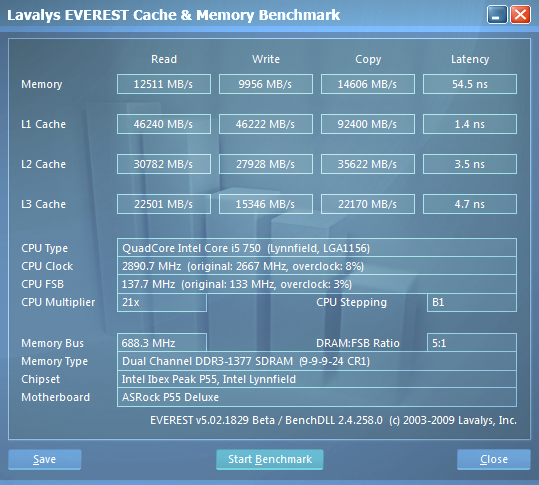
Core i5 750 Stock
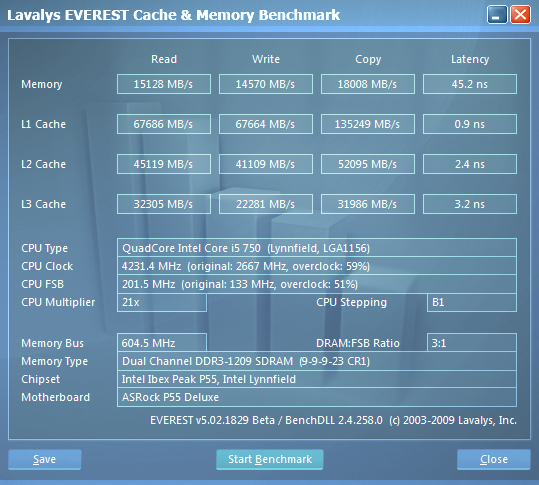
Core i5 750 @ 4230MHz
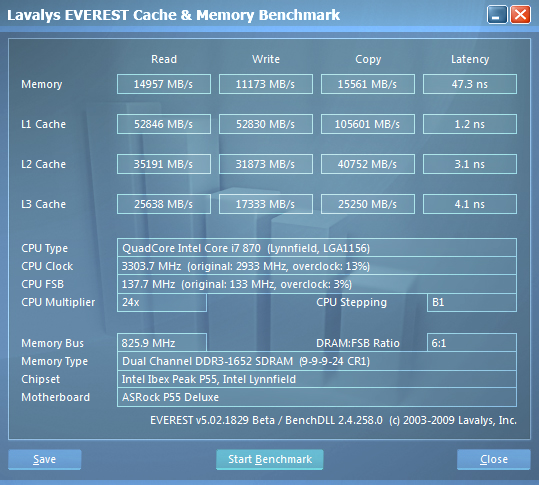
Core i7 870 Stock
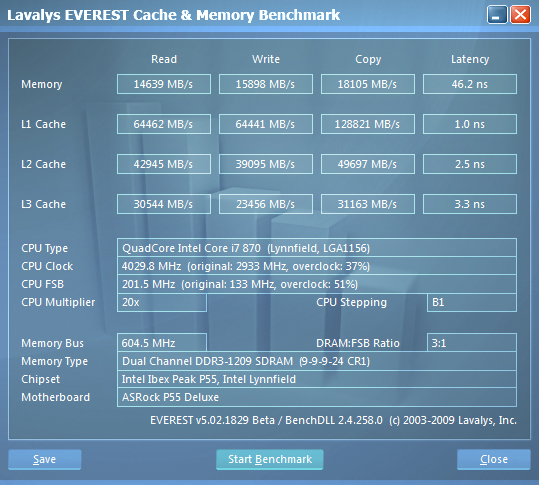
Core i7 870 @ 4030MHz
The dual-channel memory controller on the Core i5 is good, but as we see below in other testing it cannot keep up with the triple-channel controller on the Core i7.
SiSoft Sandra
Version and / or Patch Used: 2009 SP3c
Developer Homepage: http://www.sisoftware.net
Buy It Here
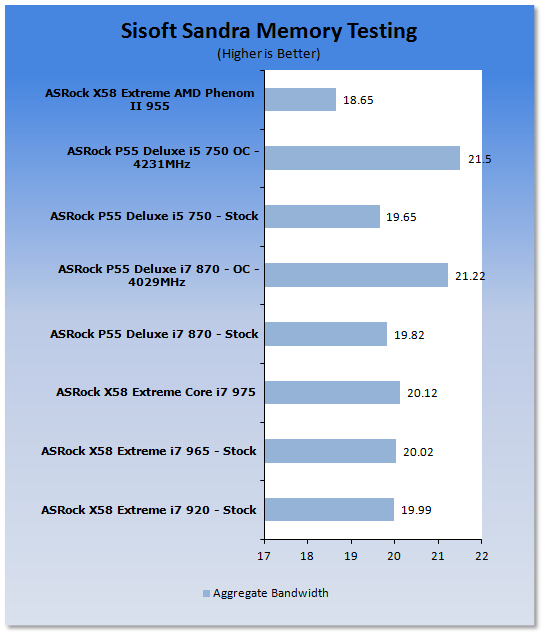
Sandra is interesting when it comes to memory bandwidth testing. As we see here Lynnfield and the Core i7 9xx series score almost the same. However (and this is the reason we run both synthetic and real world) our later testing showed that in memory intensive applications the dual-channel memory controller in Lynnfield was not as robust as the triple channel one in Nehalem.
HyperPi 0.99
Version and / or Patch Used: 0.99
Developer Homepage: www.virgilioborges.com.br
Product Homepage: www.virgilioborges.com.br
Download It Here
HyperPi is a front end for SuperPi that allows for multiple concurrent instances of SuperPi to be run on each core recognized by the system. It is very dependent on CPU to memory to HDD speed. The faster these components the faster it is able to figure out the number Pi to the selected length. For our testing we use the 32M run. This means that each of the four physical and four logical cores for the i7 and the four Physical cores of the i5 is trying to calculate the number Pi out to 32 million decimal places. Each "run" is a comparative to ensure accuracy, and any stability or performance issues in the loop mentioned above will cause errors in calculation.
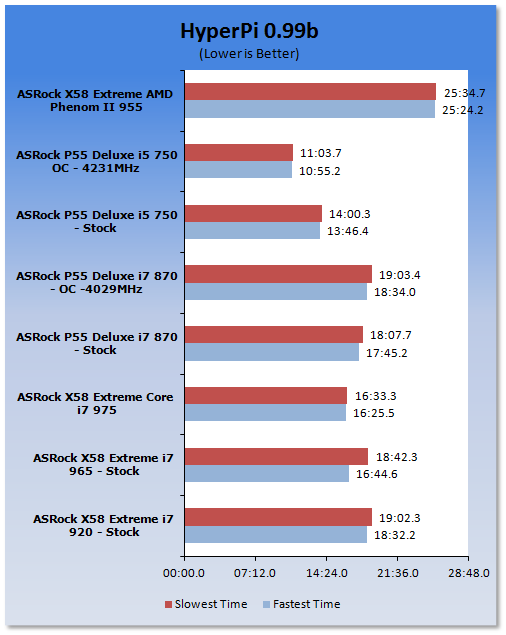
Very interesting numbers here, as we see the non-Hyper Threaded Core i5 leave everything behind. My thoughts on this is that the dual instances of HyperPi on each core is simply too much.
Synthetic Tests - Part II
Disk Drive Controller
The system drive controller is an important part of system performance. In most modern boards your drive controller will run off of the PCI-e bus. The PCI-e bus performance can be affected by poor trace layout as well as many other design choices that show up on different boards.
For testing we use both Everest and SiSoft's Sandra.
For Sandra we did not see much improvement between our overclocked and stock CPUs speeds. The same is true between the Core i7 and Core i5.
Our Everest testing only confirms what we saw with SiSoft Sandra. There is very little performance difference between the platforms.
Core i5 750 Stock
Core i5 750 @ 4230MHz
Core i7 870 Stock
Core i7 870 @ 4030MHz
Marvell SATA 6G Controller
For testing with the SATA 6G controller we used a Kingston SSD Now V+ 128GB SSD drive. We set this up on both the Intel controller and the Marvel. As we mentioned above we hit some performance issues when we ran it in the logical choice of the existing PCI-e x1 slot. This is (according to ASRock) an issue with the way the drivers deal with the Generation 1 PCI-e slot there.
However, once we followed their suggestion of putting it in one of the Generation 2 slots our performance went right back up to where it should be, although the Intel SATA controller still is faster. Once we can get our hands on a SATA 6G drive, we will be sure to return to this controller and see what (if any) performance gains there are.
Everest
Intel SATA II Controller
Marvell SATA 6G PCI-e Gen 1
Marvell SATA 6G PCI-e Gen 2
SiSoft Sandra
Intel SATA II Controller
Marvell SATA 6G PCI-e Gen 1
Marvell SATA 6G PCI-e Gen 2
Moving on now to our other tests.
Synthetic Tests - Part III
Overall System performance and Gaming
Here is where we dig out the FutureMark tests.
PCMark Vantage
Version and / or Patch Used: 1.0.0.0
Developer Homepage: http://www.futuremark.com/
Product Homepage: www.futuremark.com
Buy It Here
For overall system performance we use PCMark Vantage, this is run in both x86 and x64 mode to give the best indication of performance.
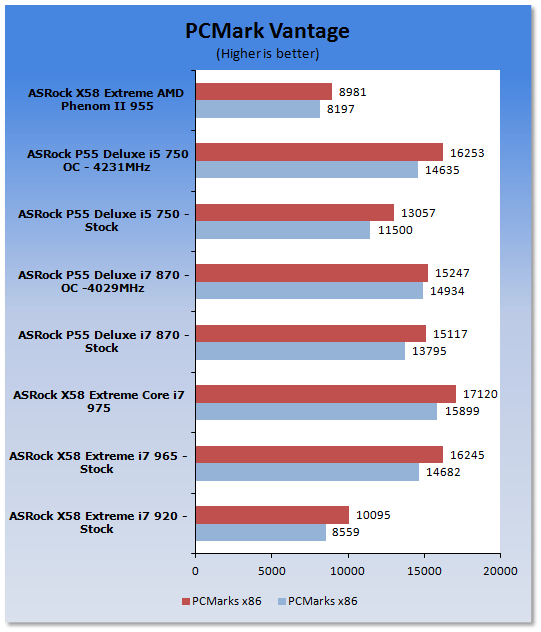
The ASRock P55 Deluxe with a Core i7 870 is quite impressive. It even comes close to the X58 running a Core i7 965 and it stomps on the Core i7 920, as does the Core i5 750.
For synthetic gaming tests we used the industry standard and overlockers bragging tool 3DMark Vantage. This is a test that strives to mimic the impact modern games have on a system. FutureMark went a long way to change from the early days of graphics driven tests to a broader approach including physics, AI, and more advanced graphics simulations. 3DMark Vantage uses the DX10 API in addition to having support for PhysX. Due to the PhysX support and our use of an nVidia GPU we run with PhysX enabled and disabled to give you the best indication of real system performance. For testing we use the Performance test run.
3DMark Vantage
Version and / or Patch Used: 1.0.1
Developer Homepage: http://www.futuremark.com/
Product Homepage: www.futuremark.com
Buy It Here
The ASRock P55 Deluxe holds its own here and gives us a good idea of what we can expect from the PCI-e controller in the Lynnfield CPU.
Cinebench R10 x64
Version and / or Patch Used: R10
Developer Homepage: http://www.maxon.net/
Product Homepage: www.maxon.net
Download It Here
Cinebench is a synthetic rendering tool developed by Maxon. Maxon is the same company that developed Cinema4D another industry leading 3D Animation application. Cinebench R10 tests your systems ability to render across a single and multiple CPU cores. It also tests your systems ability to process OpenGL information.
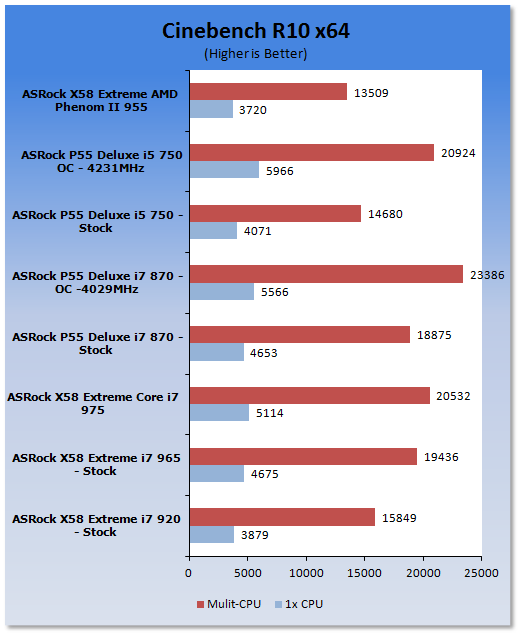
In Cinebench we see the issue with the memory controller come out a little. We also see the benefit of Hyper Threading here as the i7 870 easily beats out the Core i5 even when running 200MHz slower and the i7 975 is only slightly behind the 1GHz faster Core i5 750 when clocked to 4.2GHz.
Real-World Tests Part I
Real-world testing allows us to see how well a product will perform when used in the same manner as it would be in your house or office. It is an important side to performance testing as it can uncover hidden glitches in the way a product performs.
It is especially true when testing a mainboard, there are so many components of a board that have to interact that any problems between parts can cause a failure of the whole.
For real-world testing we use some common applications and functions. We test with LightWave 3D for rendering performance, AutoGK for Transcoding from DVD to AVI and two games for gaming testing.
Rendering
Rendering of 3D Animation is a system intensive endeavor. You need good CPU, Memory and HDD speed to get good rendering times. For our testing we use LightWave 3D. This software from Newtek is an industry standard and has several pre loaded scenes for us to use.
LightWave 3D
Version and / or Patch Used: 9.6
Developer Homepage: http://www.newtek.com
Product Homepage: http://www.newtek.com/lightwave/
Buy It Here
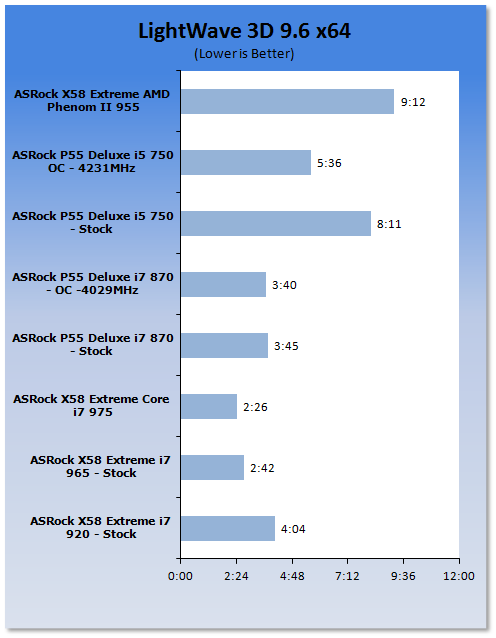
LightWave 3D can be an interesting test for a motherboard. Although it is predominantly a CPU based rendering test, it does require fast memory and a good HDD controller. The ASRock P55 Deluxe does an admirable job of providing these subsystems to LightWave as we can see in our test results.
AutoGK
Version and / or Patch Used: 2.55
Developer Homepage: http://www.autogk.me.uk/
Product Homepage: http://www.autogk.me.uk/
Download It Here
AutoGK stands for Auto Gordian Knot; it is a suite of transcoding tools that are compiled into and easy to install and use utility. It allows you to transcode non-protected DVDs and other media to Xvid or DivX format. For our testing purposes we use a non-DRM restricted movie that is roughly 2 hours in length. This is transcoded to a single Xvid AVI at 100% quality.
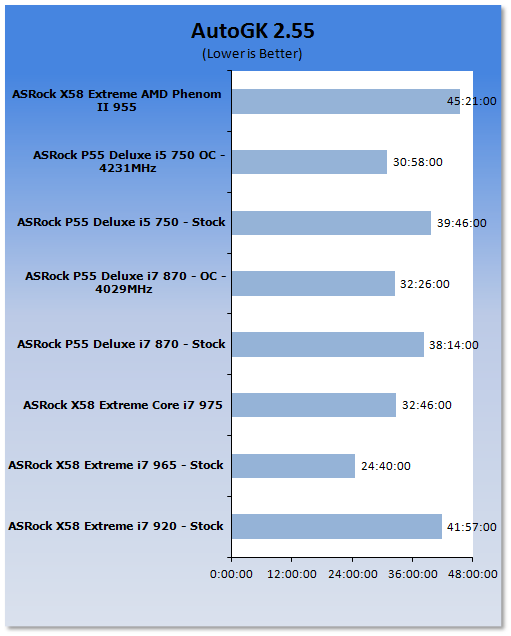
In our transcoding tests the P55 Deluxe does very well too.
Real-World Tests Part II
Here we have our real gaming tests. Each of the games we chose uses multiple cores and GPUs. They are able to stress the system through use of good AI. Both have decent positional audio that adds impact to the sound subsystem of the board. We ran each game through the level or parts listed and recorded frame per second using FRAPS. This brings the whole game into play.
Cryostasis: Sleep of Reason
Version and / or Patch Used: 1.0
Timedemo or Level Used: From Ship Entry until third Spirit Journey
Developer Homepage: http://www.505games.co.uk
Product Homepage: http://cryostasis-game.com
Buy It Here
Cryostasis : Sleep of Reason is an interesting game it is heavy on PhysX so to play it properly you will really want an nVidia GPU. However that aside it can be immersive, imagine Myst with Guns and monsters. One of the cool concepts is the spirit journeys. These allow you to enter the past of lost souls. You have to change their past to change your future. Each one makes for a nice diversion and requires you to think about what you are doing and how it will affect the outcome of the game. The Settings we used are shown below.
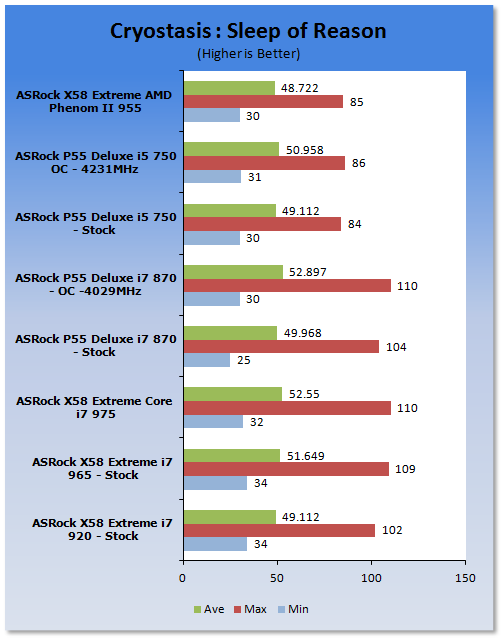
Again we see that there is very, very little difference from board to board in gaming at high resolution. You will note some slight differences due to memory to CPU and HDD to CPU speed but in reality only 1-2 FPS.
FarCry 2
Version and / or Patch Used: V1.00
Timedemo or Level Used: Clearing the Safe house through to the Rescue
Developer Homepage: http://www.ubi.com
Product Homepage: http://farcry.us.ubi.com
Buy It Here
FarCry 2 is a large sandbox style game. There are no levels here so as you move about the island you are on you do not have to wait for the "loading" sign to go away. It is mission driven so each mission is what you would normally think of as the next "Level". In the game to take the role of a mercenary who has been sent to kill the Jackal, unfortunately your malaria kicks in and you end up being found by him. Long story short you become the errand boy for a local militia leader and run all over the island doing his bidding. Settings we used for testing are shown below.
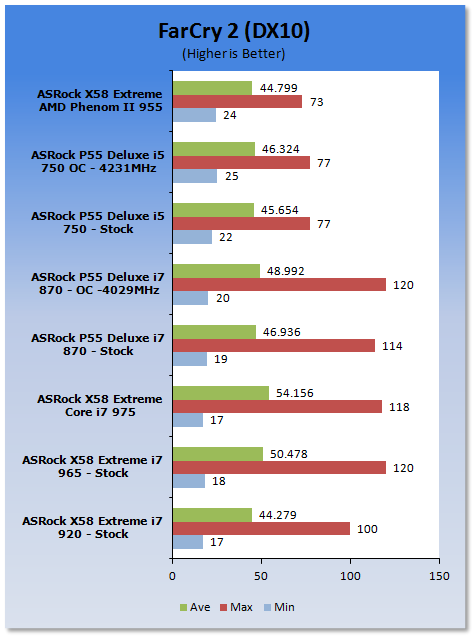
Again we see roughly the same scores for the P55 Deluxe as with most other boards.
Power Usage and Heat Tests
Power Consumption
We are now able to find out what kind of power is being used by our test system and the associated graphics cards installed. Keep in mind; it tests the complete system (minus LCD monitor, which is plugged directly into an AC wall socket).
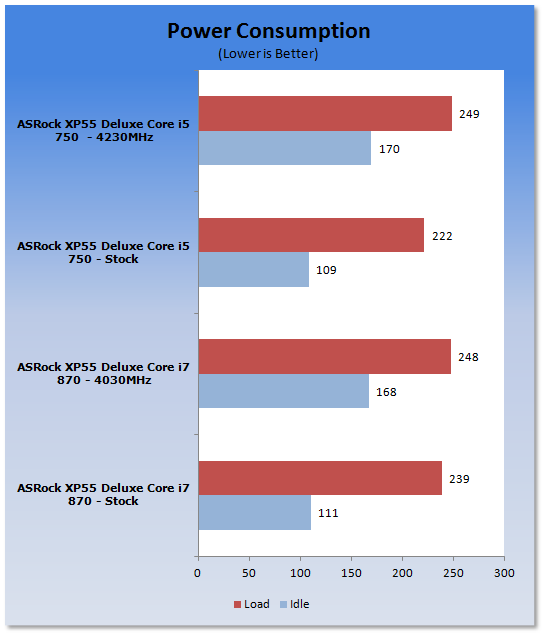
The new 2-chip solution offered by the Lynnfield and P55 show off their energy savings here. Even overclocked we see a more power efficient platform than the X58 which typically pulls about 174 Watts from the wall with a Core i7 975 onboard.
Heat Generation
As a new measure, we are now monitoring the heat generation from the key components on the motherboards, this being the Northbridge, Southbridge (if it contains one) as well as the Mosfets around the CPU. The results are recorded at idle and load during the power consumption tests.
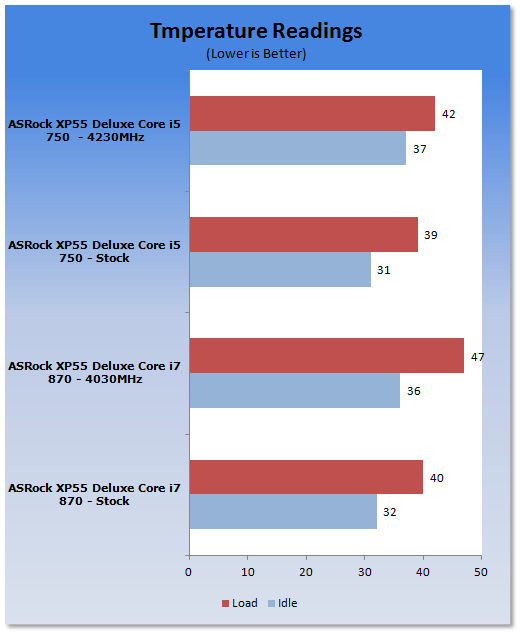
Again we see the smaller size of the P55 chipset coming into play. The heat here was very low compared to other chipsets/motherboards. Considering the stock heat of the X58 Northbridge at 44c, the P55 does a very impressive job here.
Final Thoughts
We spent a lot of time with the ASRock P55 Deluxe. It was our primary motherboard used for all of our Lynnfield testing and then we went back over it again for a fresh round of testing for this review.
It is a very impressive motherboard in terms of performance. There are some layout issues that need to be corrected and the SATA 6G card is not quite the offering it seems on the surface. Still this product managed to convey the dedication that ASRock is showing to the enthusiast.
After the visit by a Taiwanese based ASRock engineer to our lab here in Florida, we feel that ASRock is truly committed to making a better product. The effort involved in sending someone to visually see an issue thousands of miles away and then to discuss what we feel is missing/needed in motherboard design speaks volumes.
Even as an early first run motherboard for a new chipset and CPU, it is a well thought out and manufactured product. It consistently impressed and surprised us in our testing especially in overclocking and it comes loaded with many great features. I am sure that we can push both the Core i5 and Core i7 much higher with better cooling and more time to tweak the settings. So in the end, the ASRock P55 Deluxe is a great performer and one that we can highly recommend.

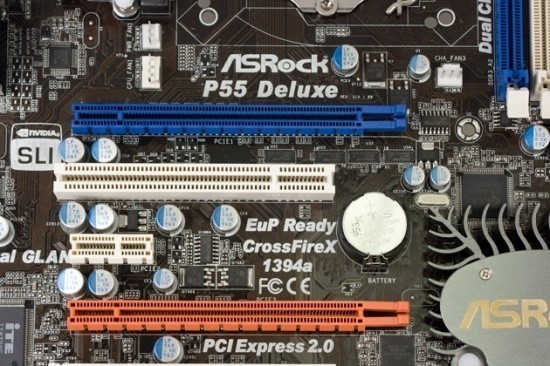
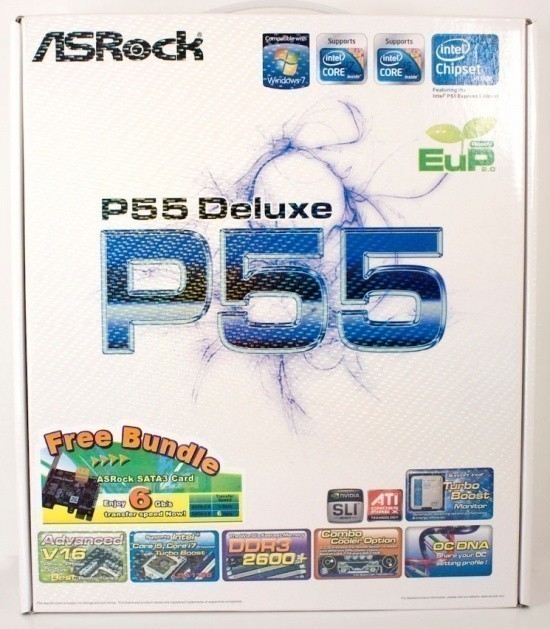
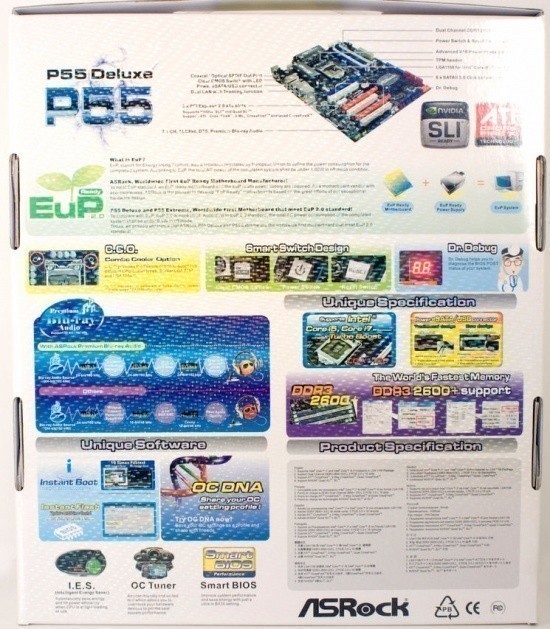
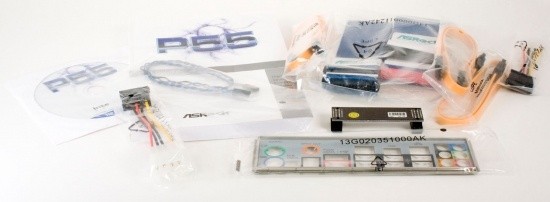
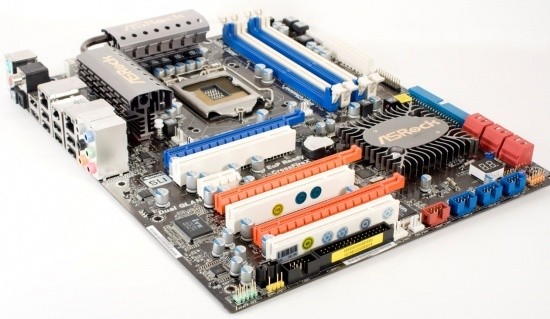
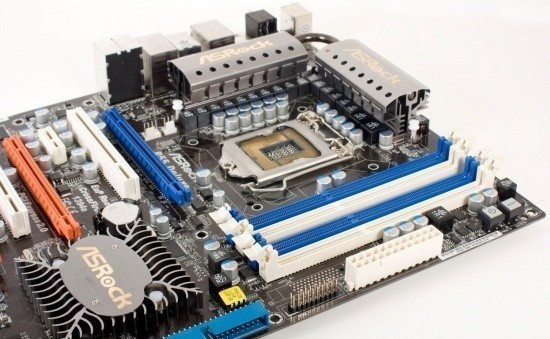
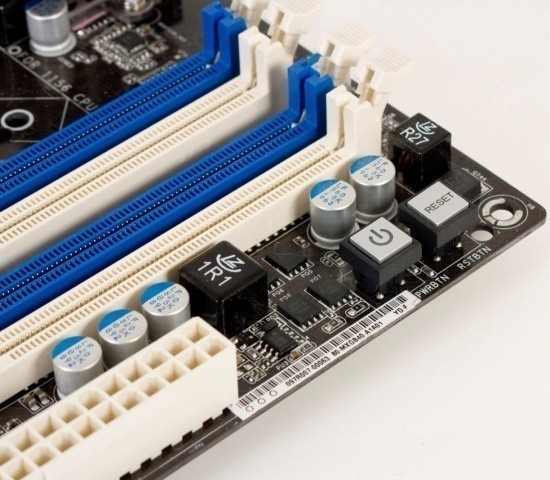
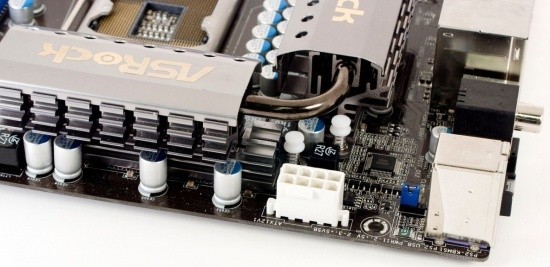
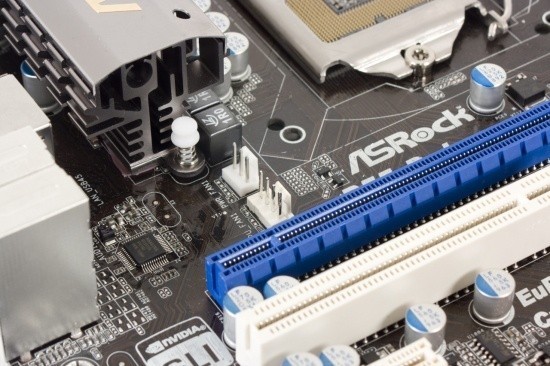
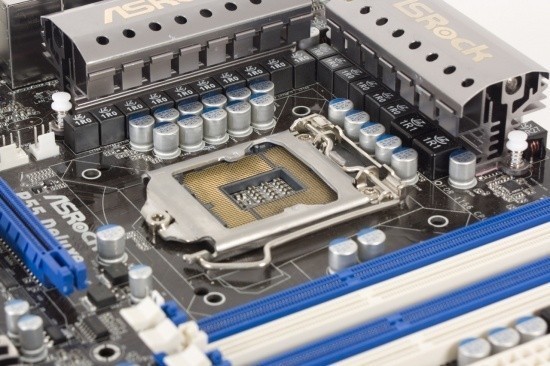
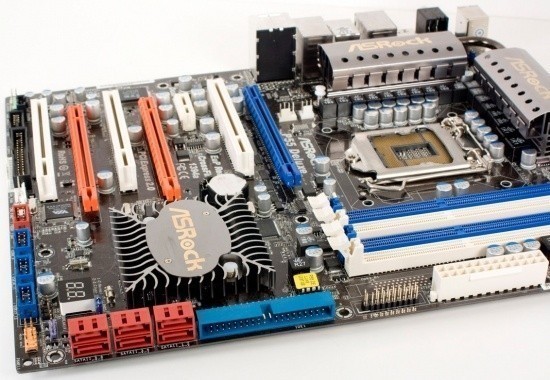
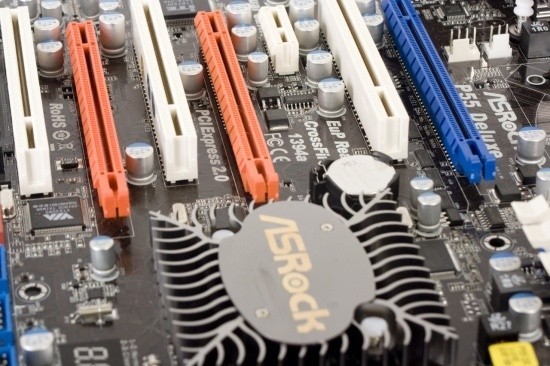
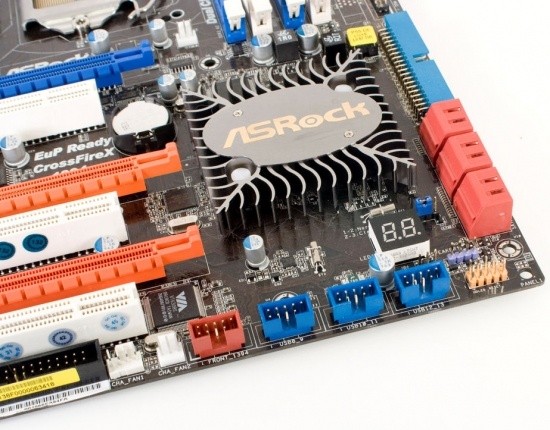
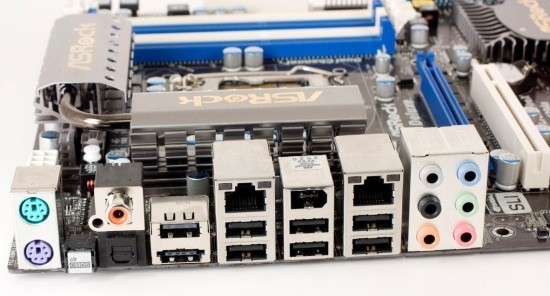
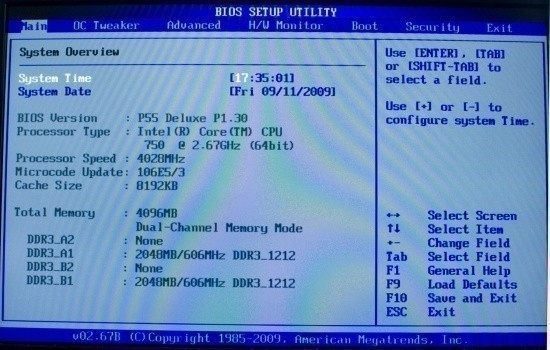
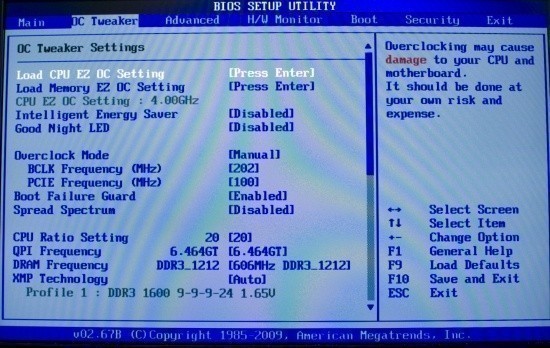
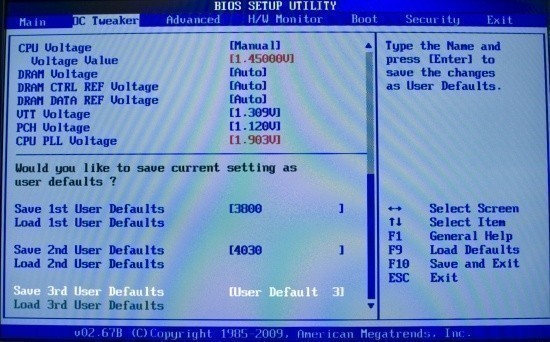
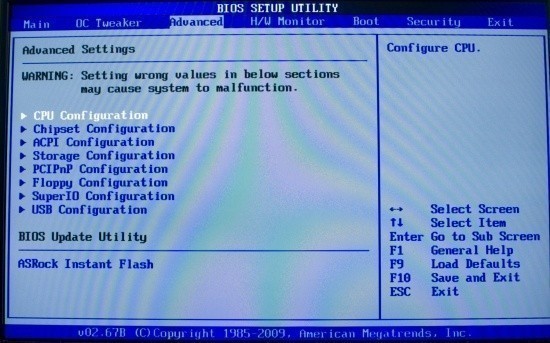
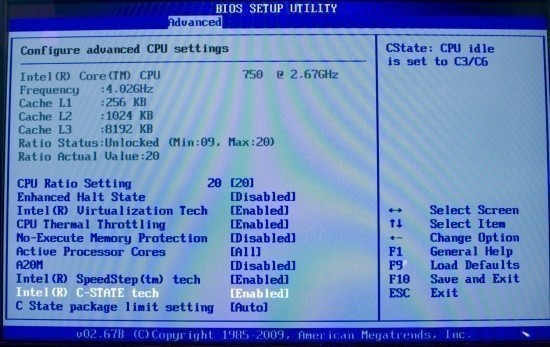
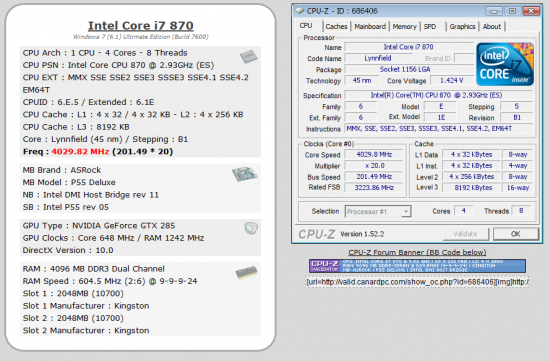
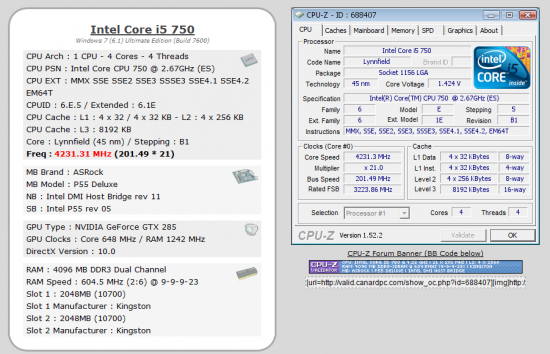

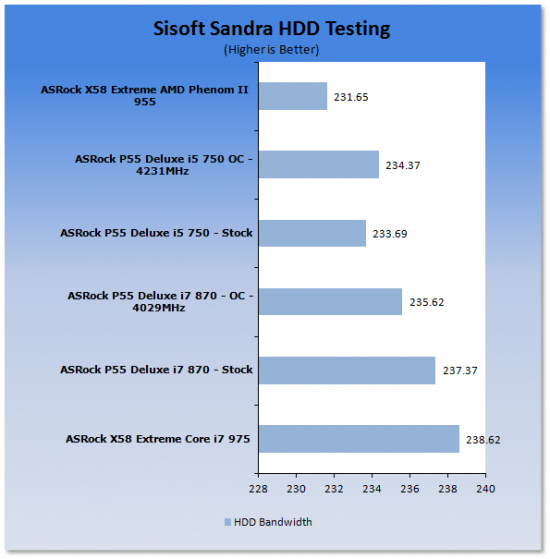
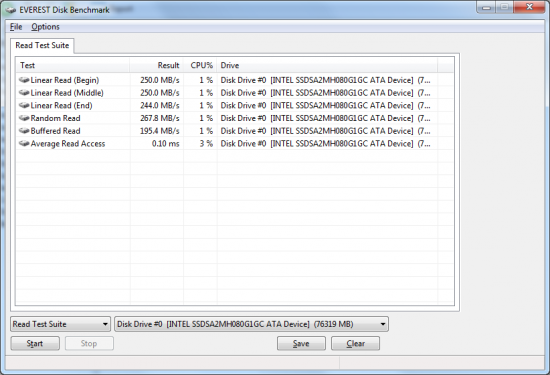
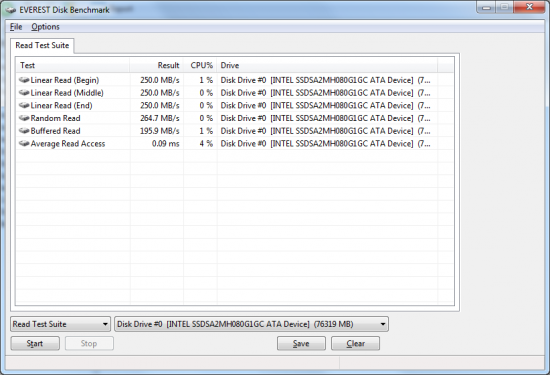
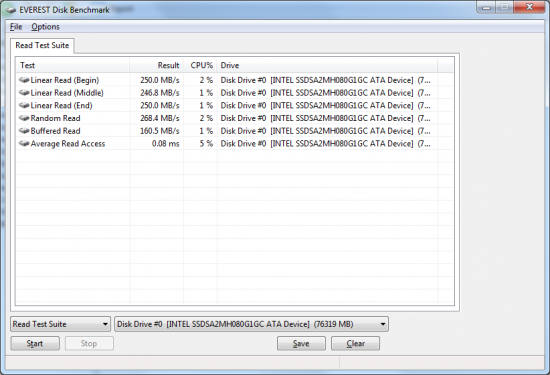
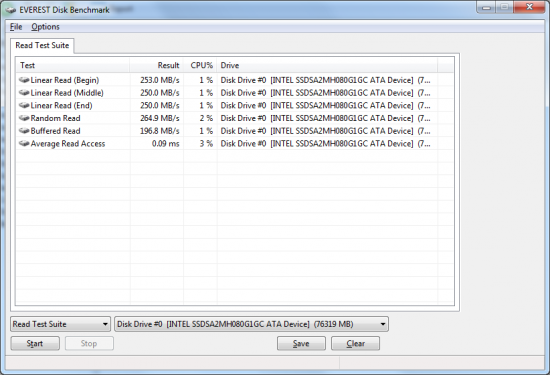
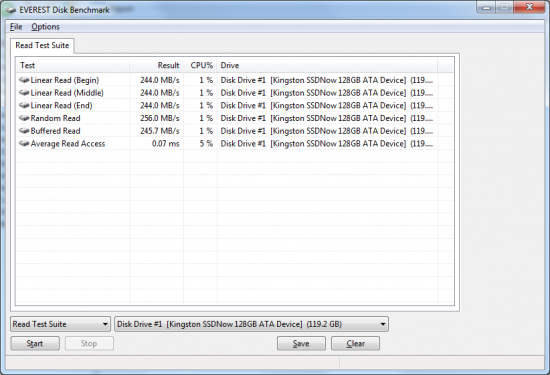
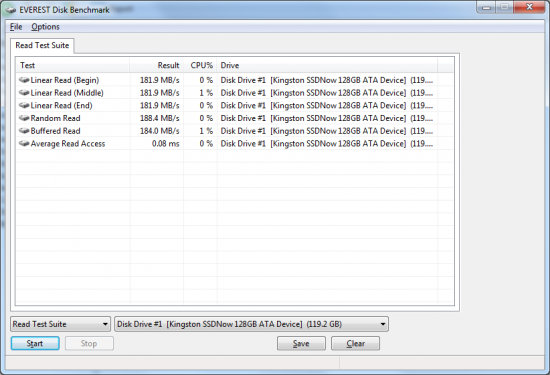
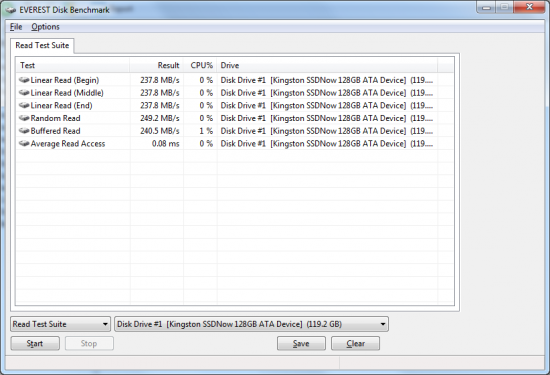
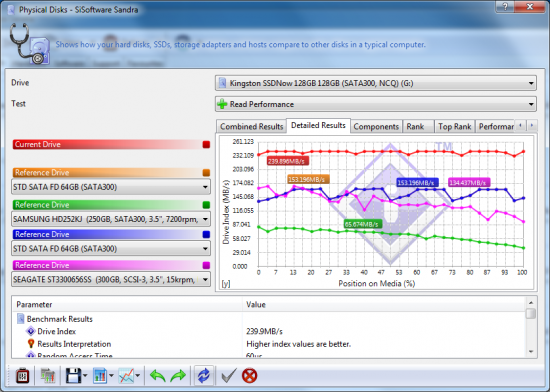
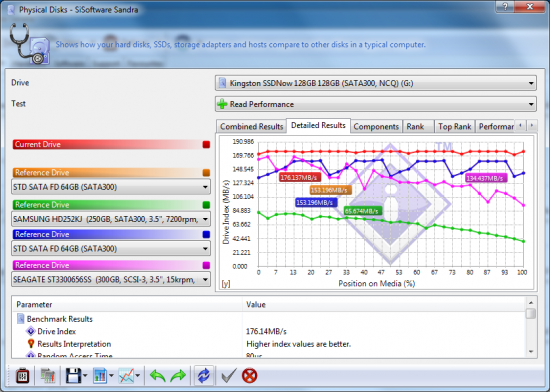
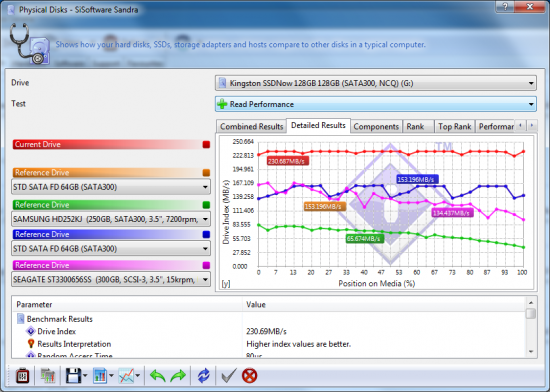
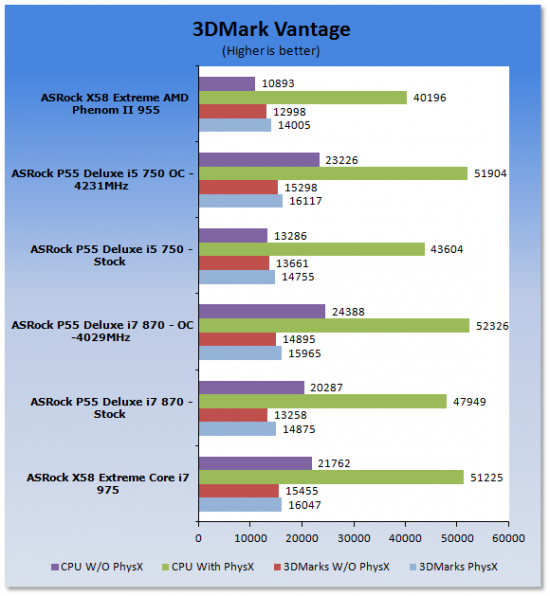
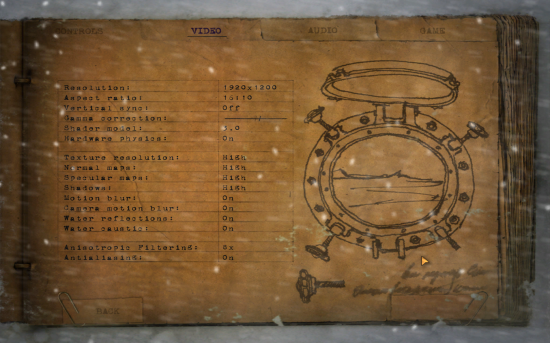
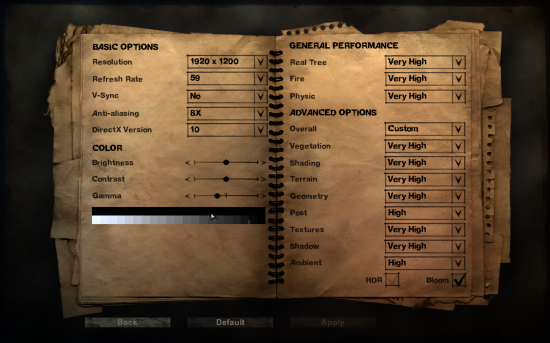

 United
States: Find other tech and computer products like this
over at
United
States: Find other tech and computer products like this
over at  United
Kingdom: Find other tech and computer products like this
over at
United
Kingdom: Find other tech and computer products like this
over at  Australia:
Find other tech and computer products like this over at
Australia:
Find other tech and computer products like this over at  Canada:
Find other tech and computer products like this over at
Canada:
Find other tech and computer products like this over at  Deutschland:
Finde andere Technik- und Computerprodukte wie dieses auf
Deutschland:
Finde andere Technik- und Computerprodukte wie dieses auf